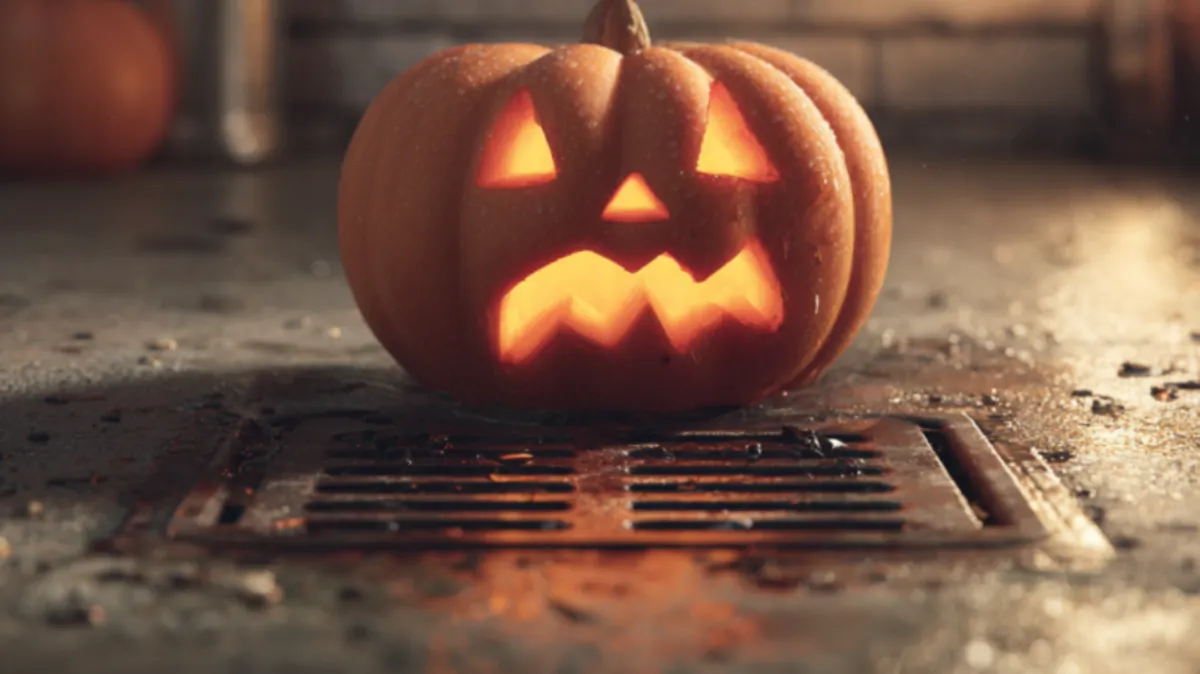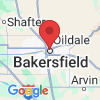
Rosedale Plumbing Journal
By The Plumbing Doc

Halloween Horrors: Don’t Let Clogged Drains Scare You
Don’t Let Pumpkin Guts Haunt Your Sink
Pumpkin carving is a classic Halloween tradition in homes across Bakersfield, bringing joy to kids and adults alike. But once the carving is done, those slimy pumpkin innards can spell trouble if they end up in your sink.
Why It’s a Problem:
Pumpkin pulp and seeds may seem soft and harmless, but they’re fibrous, sticky, and full of starch. When washed down the drain, they cling to pipe walls, tangle with other debris, and eventually harden like glue, forming stubborn clogs that won’t budge with hot water—or even mild drain cleaners.
Worse still, if sent through a garbage disposal, the stringy pulp can wrap around the blades and motor, causing:
Clogs in the disposal unit
Overheating and motor burnout
Backflow into other fixtures
Foul odors or grinding noises
What to Do Instead: Drain-Safe Pumpkin Carving Cleanup
To keep the Halloween fun clog-free, follow these steps:
1. Scrape It—Don’t Rinse It
Use a spoon or scoop to collect all seeds and pulp.
Place waste into a compost bin if available (pumpkin is biodegradable).
If composting isn’t an option, bag the scraps and toss them in the trash.
2. Wipe Before Washing
After removing the bulk of the guts, wipe out carving bowls, knives, and spoons with paper towels before rinsing.
This prevents residual pulp from slipping down the drain during cleanup.
3. Avoid the Garbage Disposal Completely
Never assume your garbage disposal can handle pumpkin waste—it can’t.
Instead of “grinding it down,” pumpkin pulp often binds the disposal’s moving parts, causing jams or mechanical damage.
Even small bits can escape the disposal and settle further down the line, where they’ll harden and trap other debris.
Keep Candy and Wrappers Away from Drains
Halloween is all about sweets, treats, and sugar-filled fun, but all those goodies come with a spooky side effect—clog-inducing waste. Whether it’s plastic wrappers from candy bars, bits of foil from chocolates, or sticky residue left behind on fingers and dishes, it all too easily finds its way into drains where it doesn’t belong.
Why It’s a Problem:
Candy wrappers are made of non-biodegradable materials like plastic and foil, which won’t dissolve or break down in your plumbing system.
When flushed or rinsed, these wrappers can get lodged in pipes, leading to backups or flow blockages.
Sticky candy residue, like melted gummies or caramel, can adhere to pipe walls and act as a trap for other debris, accelerating clog formation.
If flushed down a toilet, wrappers can cause serious problems in sewer lines or septic systems—costly repairs you don’t want after a Halloween bash.
Prevent Drain Mischief: Keep Sweets Sweet, Not Sticky
Here’s how to keep your plumbing free from Halloween candy chaos:
1. Teach Kids Proper Trash Habits
Remind little ones that wrappers belong in the trash, not in the toilet or sink.
Supervise candy unwrapping sessions and collect wrappers in a bowl or trash bag to avoid them getting lost or flushed accidentally.
2. Clean Up Candy Residue Promptly
Use paper towels or napkins to wipe down counters and tables before rinsing.
Avoid rinsing sticky candy or chocolate down the drain—scrape remnants into the trash first.
Wash sticky hands over a sink fitted with a drain screen or strainer to catch any debris.
3. Prep for Parties with Clear Disposal Options
If you’re hosting a Halloween party:
Place clearly labeled trash and recycling bins throughout high-traffic areas (kitchen, bathroom, backyard).
Include a sign that gently reminds guests not to toss wrappers in the sink or flush them.
Avoid Grease Goblins in the Kitchen
Halloween is the perfect excuse to whip up spooky snacks, fried treats, and festive favorites—from deep-fried finger foods to buttery baked goods. But once the party's over, your kitchen pipes could be facing a truly terrifying threat: grease buildup.
Why It’s a Problem:
Grease, oils, and fats may seem harmless when hot, but as they cool, they solidify and cling to the inner walls of your plumbing. Over time, this buildup acts like a magnet for other debris—like food particles and soap scum—forming thick, stubborn blockages that restrict water flow and can lead to major backups.
Even worse, pouring grease down the drain with hot water doesn’t make it safe—it simply sends the problem deeper into your plumbing system where it’s harder to fix.
Grease Disposal Tips to Keep Your Kitchen Clog-Free
Follow these steps to keep grease goblins from haunting your pipes:
1. Catch It, Don’t Drain It
After cooking, pour leftover grease into a heat-safe container such as a:
Metal can
Glass jar with a lid
Disposable aluminum tray
Allow the grease to cool and solidify completely before placing it in the trash.
Consider keeping a "grease can" under the sink to collect small amounts over time.
2. Wipe Down Greasy Surfaces Before Washing
Use paper towels to wipe down pans, plates, and utensils before rinsing them in the sink.
This removes the bulk of the grease and helps prevent residue from entering your drain system.
3. Never Pour These Down the Drain:
Cooking oil (vegetable, olive, canola, etc.)
Bacon or sausage grease
Butter or margarine
Gravy, sauces, or dressings with high fat content
Lard or shortening
4. Use a Sink Strainer for Added Protection
Install a fine mesh strainer over your kitchen sink drain to catch food scraps and oily residue.
This is especially helpful after large gatherings or holiday cooking when extra debris may slip through unnoticed.
Avoid plumbing panic and enjoy a clog-free Halloween. Schedule your seasonal drain cleaning or inspection today with The Plumbing Doc, proudly serving Bakersfield, CA and nearby areas.Stay spooky, not soggy—with help from your local plumbing pros!
[https://theplumbingdoctorbakersfield.com/]

Schedule a Professional Inspection
Ready to schedule a professional inspection? Contact us today.

